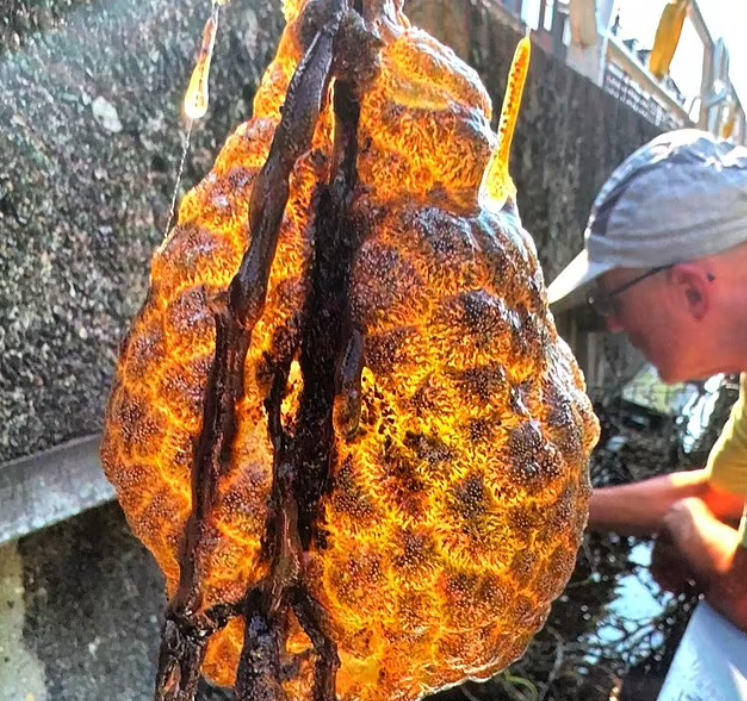A giant ‘egg sac’ in bright orange color was pulled out of a canal in Utrecht, Netherlands, by volunteers.
Local ecologists expressed their surprise, calling this strange finding “odd.” Although conspiracy theorists have referred to these structures as ‘alien egg sacs,’ fossil records indicate that these creatures existed 500 million years ago.
These sacs are actually known as “water sac bryozoans.” Water sac bryozoans are made up of organisms that come together to form colonies.
City ecologist Anne Nijs stated, “This large sac is formed by the coming together of many animals. At one point, they become a colony, and different colonies can also merge.”
They can reach up to two meters.

These structures can grow up to two meters in diameter and continue their lives in the canal by attaching themselves to a surface. Interestingly, this is the first time these organisms have been detected in Utrecht, and they are not actually native to the area.
According to a report in the Daily Mail, Nijs stated, “The presence of this exotic species here is a very special situation, but fortunately, they do not harm the environment.”
This harmless organism was returned to its original location by volunteers.
These creatures, which originate from the east coast of the United States, were first identified in Europe in 1883 in Germany and have been rapidly spreading across Western Europe since the 1990s.

Large clusters of these types of microorganisms were also observed during the summer at the McGee Creek Dam in Oklahoma, USA. At that time, some people feared that these gelatinous structures could be dangerous, while some conspiracy theorists referred to them as ‘alien egg sacs.’
Authorities intervened to reassure the local population that these organisms were not harmful. The Oklahoma Department of Wildlife Conservation (ODWC) stated in a Facebook post, “These are bryozoa, and they can appear in large numbers this summer. Don’t worry, these microorganisms are local species and are harmless to you and wildlife.”
Bryozoans consist of tiny organisms that do not exceed four millimeters in diameter. These invertebrates can reproduce by cloning themselves, as they possess both male and female reproductive organs. They typically feed on bacteria and phytoplankton in the water. Fossil records indicate that these organisms date back to 500 million years ago.

